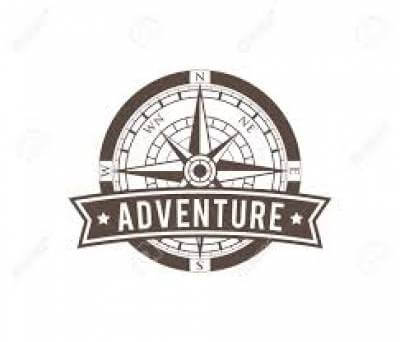EVEREST THREE HIGH PASS TREK 10 DAYS
The Everest Three High Passes Trek is a legendary journey crafted by the Sherpa Expedition Team for seasoned trekkers and climbers. This challenging route is not recommended for beginners, as it demands excellent physical fitness, the ability to trek 8–9 hours a day, and prior experience at altitudes above 5,000 meters. It offers one of the most comprehensive and scenic trekking experiences in the Everest region, crossing the three highest passes of Khumbu.
Your adventure begins with a scenic flight from Kathmandu to Lukla, the starting point of most Everest region treks. From there, the trail leads you to Phakding and then to the vibrant Namche Bazaar (3,440m), the main hub of the Khumbu Valley and a key location for acclimatization. After a rest day here, the trail veers off the popular path, heading toward the lesser-visited village of Lungden.
The first major challenge is Renjo La Pass, which rewards trekkers with breathtaking views of the Gokyo Lakes and a panoramic sweep of the Everest range. After the pass, the trail descends into Gokyo, a serene village beside crystal-clear turquoise lakes. A hike up Gokyo Ri offers one of the most stunning viewpoints in the Himalayas, showcasing Everest, Lhotse, Makalu, and Cho Oyu.
Next, the trek heads toward Thagnak, a small settlement at the foot of the second high pass. The following day, you’ll take on the steep and icy Cho La Pass, which connects the Gokyo region with the traditional Everest Base Camp route. After crossing this demanding pass, you’ll merge with the classic trail and continue toward Everest Base Camp — a dream destination for trekkers around the world.
From Base Camp, you will ascend to Kala Patthar, a famous vantage point that offers the best ground-level views of Mount Everest, especially at sunrise. The trail then descends to Lobuche, preparing you for the third and final pass: Kongma La. This is the toughest of the three passes and requires strong stamina, but the views and sense of achievement make it worthwhile.
After crossing Kongma La, the trail drops down to Chhukung, a peaceful village surrounded by towering peaks. From there, you’ll descend to Dingboche, another important Sherpa settlement ideal for rest and reflection. The trek concludes with an exhilarating shared helicopter flight back to Lukla, offering stunning aerial views of the terrain you just conquered, followed by a return flight to Kathmandu.
The Everest Three High Passes Trek is the ultimate test of endurance, skill, and spirit in the Himalayas. It combines remote landscapes, iconic mountains, and immersive Sherpa culture to deliver a once-in-a-lifetime experience for those prepared to take on the challenge.
ITINERARY
Day 1 : Fly from Kathmandu to Lukla & Trek to Jorsalle (2,740m) – Duration: 7-8 hours.
Your epic journey begins with a thrilling early morning flight from Kathmandu to Lukla, the gateway to the Everest region. From Lukla, you start trekking through beautiful pine forests and crossing suspension bridges as you descend slightly towards the Dudh Koshi River. The trail gradually ascends to Jorsalle, a small village nestled in the valley. This first day sets the tone with scenic mountain views and a chance to acclimate slowly to the Himalayan environment.
Day 2 : Trek from Jorsalle to Thame (3,750m) – Duration: 6-7 hours.
Leaving Jorsalle, the trail becomes steeper as you climb towards the traditional Sherpa village of Thame. This less-traveled route offers a quiet atmosphere, rich with local culture and stunning Himalayan panoramas. You pass through rhododendron forests and terraced fields, enjoying views of majestic peaks like Ama Dablam. Thame is a serene village where you can learn about Sherpa life and prepare for the higher altitude ahead.
Day 3 : Trek from Thame to Lungden (4,500m/14,764ft) – Duration: 5-6 hours.
Today’s trek is a rewarding ascent through remote and rugged terrain as you make your way to Lungden. The path winds through high alpine landscapes dotted with prayer flags and mani stones. Lungden is a small, isolated village, offering breathtaking views of towering Himalayan giants. The air is thinner here, and this is a key point to focus on acclimatization while enjoying the peaceful surroundings.
Day 4 : Trek from Lungden to Gokyo Lake (4,750m) via Renjo La Pass (5,446m/17,867ft) – Duration: 8-9 hours.
This is one of the most challenging but spectacular days of the trek. You climb steadily to the Renjo La Pass at 5,446 meters, rewarded with panoramic views of Everest, Makalu, and Cho Oyu. The descent leads to the serene Gokyo Lake, known for its turquoise waters and reflection of the towering peaks. Gokyo village offers a quiet place to rest and soak in the breathtaking alpine scenery.
Day 5 : Hike to Gokyo Ri (5,357m) & Trek to Thangnak (4,700m/15,400ft) – Duration: 5-6 hours.
Start early with a hike up to Gokyo Ri, one of the best viewpoints in the region. From the summit, you’ll enjoy sweeping vistas of Everest, Lhotse, and Cho Oyu. After soaking in the views, descend back to Gokyo village and continue trekking to Thangnak. This village, nestled in a rugged valley, offers a cozy stopover before the challenging Cho La Pass tomorrow.
Day 6 : Trek from Thangnak to Dzongla (4,855m/15,930ft) via Cho La Pass (5,420m/17,783ft) – Duration: 7-8 hours.
Today you tackle the tough Cho La Pass, a steep and icy crossing requiring good balance and endurance. The climb offers stunning glaciers and snow-capped peaks as your backdrop. After crossing, descend to Dzongla, a small settlement where trekkers rest and recover. The dramatic landscape and sense of achievement make this a memorable day on the trek.
Day 7 : Trek to Everest Base Camp and back (5,364m/17,598ft) to Gorak Shep (5,185m/17,010ft) – Duration: 8-9 hours.
From Dzongla, you descend and join the classic Everest Base Camp trail. Reach the iconic Everest Base Camp, a pilgrimage site for climbers worldwide. After spending time exploring the area, retrace your steps to Gorak Shep for overnight. The surrounding views of the Khumbu Glacier and towering summits make this day a highlight of the entire trek.
Day 8 : Climb to Kala Patthar (5,545m/18,208ft) and trek to Lobuche (4,910m/16,175ft) – Duration: 5 hours.
An early morning ascent to Kala Patthar rewards you with arguably the best close-up views of Mount Everest at sunrise. The panorama includes Everest, Lhotse, and Nuptse, bathing in golden light. After the summit experience, descend to Lobuche, a lively mountain village known for its teahouses and spectacular views. This day blends physical challenge with awe-inspiring scenery.
Day 9 : Trek from Lobuche to Chhukung (4,730m/15,580ft) via Kongma La Pass (5,535m/18,159ft) – Duration: 7-8 hours.
Today’s trek is a demanding crossing of the highest of the three passes, Kongma La. The path leads through snowfields and moraine valleys, testing your stamina and trekking skills. After the pass, descend into the tranquil village of Chhukung, surrounded by towering peaks and glaciers. This remote stop offers a peaceful place to rest and reflect on the challenges overcome.
Day 10 : Trek to Dingboche and shared helicopter flight to Lukla; fly back to Kathmandu.
From Chhukung, descend to Dingboche, a bustling Sherpa village ideal for a final rest. Later, enjoy a shared helicopter flight back to Lukla, offering breathtaking aerial views of the mountains and valleys you trekked through. From Lukla, catch your flight to Kathmandu, where your unforgettable Himalayan adventure concludes with memories to last a lifetime.
SERVICES
What’s Included in Your Package
- Private Ground Transfers: All domestic airport pick-ups and drop-offs by comfortable private car or jeep.
- Scenic Helicopter Flight: A shared helicopter flight from Dingboche to Lukla, offering a breathtaking aerial view of the Himalayas.
- All Meals During the Trek: Nutritious three meals a day (breakfast, lunch, and dinner) throughout the trekking days, plus fresh seasonal fruit served every evening after dinner.
- Comfortable Lodge Accommodation: Overnight stays in carefully selected trekking lodges (tea houses) known for warmth and hospitality.
- Required Trekking Permits: All paperwork and permits, including the Sagarmatha National Park Entry Permit and Khumbu Pasang Lhamu Rural Municipality Fee.
- Domestic Flights: Round-trip flights between Kathmandu and Lukla, including private airport transfers and all domestic airport taxes.
- Expert Trekking Guide: An experienced, English-speaking, government-licensed trekking guide with deep local knowledge. All his meals, salary, insurance, accommodation, and transport are included.
- Professional Sherpa Porters: Reliable and strong Sherpa porters (one porter for every two trekkers), equipped with appropriate trekking gear. All their food, wages, insurance, and accommodation are covered.
- Medical & Emergency Support: A well-stocked first aid kit and emergency helicopter evacuation arrangements (covered by your travel insurance, if required).
- High-Quality Trekking Gear Provided: Free use of a sleeping bag, down jacket, duffel bag, and walking poles (to be returned after the trek).
- Sherpa Expedition Souvenir: A complimentary Sherpa Expedition and Trekking T-shirt as a memento of your adventure.
- Safety Monitoring: Daily health checks with an oxygen saturation meter to monitor pulse, oxygen level, and heart rate—helping detect early signs of Altitude Mountain Sickness (AMS).
- Assistant Guide Support: For groups of 8 or more trekkers, an additional assistant guide is included for extra support and safety.
- Government & Administrative Fees: All official taxes and government charges are fully covered.
What’s Not Included in Your Package
- Meals in Kathmandu: Lunch and dinner while staying in Kathmandu are not included.
- Hotel Accommodation in Kathmandu: Pre- and post-trek hotel stays in Kathmandu are not part of the package.
- Nepal Entry Visa Fee: Obtained on arrival at Tribhuvan International Airport. Visa costs: $30 USD (15 days), $50 USD (30 days), $125 USD (90 days).
- Personal Travel and Medical Insurance: Mandatory and must be arranged before your trip.
- International Airfare: Flights to and from Nepal are not included in the package.
- Personal Expenses: Includes souvenirs, laundry, extra services, and anything not mentioned in the included items.
- Beverages and Extra Food Items: All alcoholic and non-alcoholic drinks (tea, coffee, hot chocolate, soup, soft drinks, bottled water), and extra food items must be purchased individually along the trek.
- Desserts and Sweet Treats: Items like chocolate, cake, pie, and pudding are not included.
- Hot Showers and Charging: Fees for hot showers and charging electronic devices at tea houses are the trekker’s responsibility.
- Tips for Staff: Tips for your guide, porter, and driver are not included but are customary and greatly appreciated.
- Excess Baggage on Lukla Flight: The weight allowance is 10 kg for checked baggage. Any excess will incur an additional fee.
- Early Return Costs: In case of illness or unforeseen circumstances requiring early trek return, all related expenses (flights, meals, hotels, etc.) are non-refundable and will be at your own cost in Kathmandu.
EQUIPMENTS
The following information will give you some idea about what you need to bring for the trek. It is important you do not forget the essential items, as this will determine your comfort and safety on the trek. Equally important is that you do not burden yourself with unnecessary equipment on the trek.
General
- All season sleeping bag and down Jacket (we can provide if you need it, but has to be returned after the trek)
- Duffle bag ( Sherpa Expedition & Trekking provide duffle bag during the trek but has to be returned after the trek)
- A wind and waterproof thin layered jacket (a must-have for morning and evenings above 3,000m)
- Daypack
Upper Body- Head / Ears / Eyewear
- A pair of half gloves
- A warmer hat that covers the ears
- Sunglasses
- Neckwarmer
- Sunscreen (35 to 60 SPF)
- Headlamp and an extra set of batteries
Hands
- A pair of half gloves for walking poles(if you prefer)
- Warmer shell gloves and liner
Upper Body
- long sleeve t-shirts
- Thermal tops
- wool jacket or pullover
- Sports bras for women and girls
- Water and windproof shell jacket
Lower Body
- Thermal underwear (especially trousers)
- Crampons
- windproof and waterproof trousers
- warmer trousers
- Comfortable trekking pants
- Extra casual sport pants
Footwear
- A pair of good waterproof trekking boots
- Pair of sandals
- 4-5 pairs of woolen socks
- Sock liners
- Light shoes and sneakers
- First Aid Kits and Medicines
- Assorted adhesive bandages (fabric preferred)
- Blister treatment cream or similar
- Insect / anti-itch ointment
- Ibuprofen or other pain-relief medication
- Diamox (125mg to 250mg tablets for altitude sickness)
- Warps, splints, and wound coverings butterfly bandage
- Water purifying pills
(Note our company guide will carry the medicines and first aid kits during the trek. However, we recommend you bring your personal first-aid kit as well)
Miscellaneous - but must be useful on the trek
- 4 passport-size photos with original passport
- Water bottle & filter
- Flight details (please make a copy and leave one pic at our office in KTM because in case you want to change your flight date)
- Bathroom kit (conform, should be included toilet paper, plastic bags, hand wipes, towel, and soap, etc.)
Extra things
- Comfortable trekking poles
- Quality energy dry foods (up to you)
- Power bank and music players
- Camera (memory card, chargers, and extra batteries)
GOOD TO KNOW
High-Altitude Experience is a Must
The Everest Three High Passes Trek isn’t suitable for beginners. Prior experience trekking at altitudes above 5,000 meters is crucial for safety and success. The thin air and long days require your body to already be familiar with high elevations. Without previous exposure, the risk of altitude sickness greatly increases. This trek demands physical and mental readiness built from past expeditions, ideally in challenging conditions. Training and experience are your best tools for thriving in the extreme Himalayan environment.
Train Hard Before You Trek
Preparing physically for this trek is non-negotiable. Daily hiking durations can exceed 8–9 hours over steep, rocky, and often icy terrain. Build endurance through long-distance hiking, cardio workouts, and strength training at least 3–6 months prior. Include hikes carrying a loaded backpack to simulate trail conditions. Altitude training or high-elevation practice hikes can be especially beneficial. This level of conditioning reduces fatigue, improves safety, and ensures you’ll enjoy the breathtaking journey rather than struggle through it.
Acclimatization Saves Lives
Altitude sickness can hit anyone, regardless of fitness. That’s why proper acclimatization is a central part of the trek. The route includes key rest days, especially at Namche Bazaar and Gokyo, which allow your body to adjust gradually. Skipping these breaks can lead to serious health issues like AMS (Acute Mountain Sickness). Climb slowly, follow the “climb high, sleep low” principle, and listen to your body. Acclimatization is not just recommended — it’s essential for your safety and success.
Expect Unpredictable Weather
In the Himalayas, conditions can change in minutes. You might face sunshine, snow, wind, and freezing temperatures in a single day. Pack high-quality thermal layers, a down jacket, waterproof outerwear, and extra socks and gloves. UV protection is also vital due to strong sunlight at high altitudes. Start trekking early each day to avoid afternoon weather shifts. Being well-prepared for every condition will make the trek not only more comfortable but dramatically safer in remote, exposed environments.
Hydration is Your Best Defense
Staying hydrated is one of the most effective ways to combat altitude sickness. At high elevations, your body dehydrates faster—even without sweating. Drink at least 3–4 liters of water daily, and add electrolyte powders for extra balance. Carry a good water purification system or tablets, as bottled water isn’t always available and can add waste. Avoid caffeine and alcohol, which can increase dehydration. Make hydration a habit and you’ll improve both your energy levels and your altitude adaptation.
Don’t Trek Without Insurance
High-altitude trekking comes with real risks. Even with perfect preparation, emergencies can arise. It’s absolutely essential to have comprehensive travel insurance that covers medical treatment and helicopter evacuation above 5,000 meters. Policies should also include trip cancellation, lost gear, and emergency delays. Without insurance, rescue operations can cost thousands of dollars. Carry digital and printed copies of your insurance policy and share them with your guide. Peace of mind is priceless when trekking in remote, extreme environments.
Carry Cash – ATMs Are Scarce
Once past Namche Bazaar, you won’t find any ATMs, and most teahouses and shops do not accept cards. Bring enough Nepali rupees to last the entire trek—including food, hot showers, Wi-Fi, charging fees, and tips. Budget some extra cash for emergencies or optional purchases along the way. It's better to carry slightly more than you need, in small denominations. Store it in a waterproof pouch, and keep it on you at all times. Cash is your lifeline in the mountains.
Hire a Local Guide or Porter
Hiring a licensed guide or porter adds safety, support, and cultural connection. Guides manage logistics, assist in emergencies, monitor altitude symptoms, and ensure you're on the right path—especially helpful on lesser-trekked routes like the Three Passes. Porters help lighten your load, preserving your energy. Plus, you’ll be contributing to the local economy. Trekking with locals offers deeper insight into Sherpa culture and turns a tough journey into a shared, enriching experience with people who know the terrain best.
Respect Sherpa Culture and Customs
Trekking through the Khumbu region means stepping into Sherpa land. Always be respectful of traditions—dress modestly, ask permission before taking photos, and walk clockwise around stupas and mani stones. Greet locals with a warm “Namaste” and avoid pointing your feet at sacred objects. Learn a few Nepali or Sherpa phrases to show appreciation. Cultural sensitivity deepens your experience and ensures you're a welcome guest in these beautiful, ancient villages. Leave no trace and honor the communities hosting your journey.
Mental Strength is Just as Important
Physical training is essential—but your mindset will carry you through the hardest moments. The Everest Three Passes Trek can be mentally taxing with its long days, isolation, and extreme conditions. There will be times when your body wants to stop, but mental grit will push you forward. Stay positive, take breaks, and remember why you started. Meditation, journaling, or even music can help maintain morale. Resilience and determination are what transform a difficult trek into an unforgettable triumph.
MAP
PHOTOS/Videos
Departures
Select a departure month
Fill out the form below and a Travel Expert will reach out to create your perfect tour.
FAQS
Is the Everest Three Passes Trek suitable for beginners?
No, this trek is not suitable for beginners. It involves crossing three high-altitude passes over 5,000 meters, with long trekking days and challenging terrain. Prior experience with high-altitude trekking is essential. Beginners may struggle with the physical and altitude demands, increasing health risks. For first-timers, starting with a lower-altitude trek like Everest Base Camp or Annapurna Base Camp is highly recommended before attempting this route.
What are the three passes in the Everest Three High Passes Trek?
The trek includes three major mountain passes: Renjo La (5,360m), Cho La (5,420m), and Kongma La (5,535m). Each pass presents its own unique challenges and breathtaking views of the Everest region. Renjo La offers stunning vistas of Gokyo Lakes, Cho La connects Gokyo with the classic Everest trail, and Kongma La is the highest and most difficult, offering dramatic panoramas of the surrounding Himalayan giants.
How long does the Everest Three Passes Trek take?
The full trek typically takes 18 to 21 days, depending on your chosen itinerary and pace. This includes acclimatization days, rest stops, and weather contingencies. A slower, well-paced schedule is highly recommended to adjust to altitude and avoid AMS (Acute Mountain Sickness). Rushing this trek can increase risks significantly, so most itineraries are designed with gradual elevation gain and strategic acclimatization points like Namche Bazaar and Gokyo.
When is the best time to do the trek?
The best times for the Everest Three Passes Trek are spring (March to May) and autumn (September to November). These seasons offer clear skies, stable weather, and the best mountain views. Spring brings blooming rhododendrons, while autumn offers crisp air and excellent visibility. Winter can be dangerously cold and snowy, while summer (monsoon) brings heavy rain and poor trail conditions, making high passes difficult or impassable.
Do I need permits for the Three Passes Trek?
Yes, you’ll need several permits: the Sagarmatha National Park Permit, the Khumbu Pasang Lhamu Rural Municipality Permit, and if entering via Jiri or Salleri, the Gaurishankar Conservation Area Permit. These can be obtained in Kathmandu, Lukla, or Monjo. If trekking with an agency, they usually handle this for you. Keep multiple copies as checkpoints along the route require verification, and loss of permits can delay your journey.
Can I do the trek independently, or do I need a guide?
As of 2023, solo trekking in many parts of Nepal requires a licensed guide, including the Everest region. Beyond regulation, hiring a guide is highly recommended for this trek. The Three Passes route includes remote areas, unpredictable weather, and unmarked trails. A guide enhances safety, navigation, and helps manage altitude-related issues. Porters also ease the burden of heavy backpacks, allowing you to focus on enjoying the experience.
What kind of accommodation is available on the trek?
Accommodation consists mostly of teahouses—basic lodges run by local families. Rooms are simple, usually twin-share with shared bathrooms. Facilities become more basic at higher altitudes. Most teahouses offer meals, hot drinks, and charging (sometimes for a fee). Heating is limited to common areas. Booking in advance is rare except during peak season. Despite the simplicity, the hospitality and atmosphere in these mountain lodges offer a unique cultural experience.
How cold does it get during the trek?
Temperatures vary greatly by season and altitude. In higher sections like Cho La and Kongma La, night temperatures can drop to -15°C (5°F) or lower, especially in spring and autumn. Even daytime temperatures can feel icy with wind chill. Warm layers, a quality down jacket, gloves, and thermal base layers are essential. Always be prepared for sudden drops in temperature, even if the weather seems clear during the day.
What are the risks of altitude sickness on this trek?
The risk of Altitude Sickness (AMS) is significant, especially since all three passes are above 5,000 meters. Common symptoms include headaches, dizziness, loss of appetite, and nausea. Proper acclimatization, slow ascent, hydration, and avoiding alcohol are key prevention steps. Always take rest days at key points like Namche and Gokyo. Carry altitude medication (e.g., Diamox), and never ignore symptoms—descend immediately if they worsen. In serious cases, helicopter evacuation may be necessary.
Is Wi-Fi or mobile network available on the trek?
Yes, but connectivity is limited and unreliable at high altitudes. In places like Lukla, Namche Bazaar, and Gokyo, teahouses often offer Wi-Fi (for a fee). As you ascend, signals weaken, and internet access may disappear altogether, especially over the passes. Ncell and NTC networks have spotty coverage in some areas. Many trekkers buy a local SIM card or use Everest Link cards for limited data access in key villages.
Latest Traveller’s Reviews
Travel experiences of our clients who recently returned from their trips.
100%
Based On 4539 Reviews
Benjamin Carter
Belgium
May 29, 2025
Fantastic Trek Led by Skilled Guide
My Annapurna Base Camp trek with Sherpa Expedition was the best decision I’ve made for travel in years. Everything was organized with precision, and our guide Dorchi truly made the journey memorable. He was friendly, highly experienced, and very responsive to our needs throughout the trek. His guidance on altitude management and pacing helped us avoid any health issues. The landscapes changed daily—from lush green valleys to snow-covered ridges—and Dorchi always stopped to let us absorb the views or share a story about the area. The local insight he offered brought the trek to life. Sherpa Expedition arranged everything seamlessly: flights, accommodations, meals, and permits. The tea houses along the trail were clean and comfortable, and food was plentiful. I appreciated the daily briefings and flexibility based on our group’s energy. Standing at Annapurna Base Camp surrounded by snow-capped peaks felt surreal. I’ve done other treks before, but the care and local connection Sherpa Expedition offers is unmatched. If you’re planning this trek, book with them and request Dorchi—you’ll be in excellent hands.
Sofia Oliveira
Portugal
April 21, 2025
Unforgettable Views
The Annapurna Base Camp trek with Sherpa Expedition was absolutely life-changing. From the first email inquiry to our return to Kathmandu, everything was managed with care. I was especially impressed by our guide, Tandin, who was thoughtful, funny, and incredibly organized. Tandin made the trek enjoyable even during the tougher climbs. He always checked on our health, explained the route, and kept the atmosphere light with great stories. His knowledge of the region and local culture enriched every step of the journey. Sherpa Expedition provided excellent accommodations and food throughout the trek. The tea houses were cozy, and we had delicious meals after long hiking days. Even the little details like wake-up tea and hot water bottles were appreciated. The beauty of the trail was beyond words—cascading waterfalls, forests filled with blooming rhododendrons, and breathtaking mountain views. The moment we reached Annapurna Base Camp under clear skies will forever stay with me. Tandin and Sherpa Expedition created the perfect balance of professionalism and warmth. I highly recommend them to anyone dreaming of the Himalayas.
Helena Dupuis
Brazil
April 14, 2025
From Start to Summit – Exceptional Support from Suman Sherpa
I had read about how difficult the Everest Three Pass Trek is, but I was still caught off guard by how demanding it was. That said, I wouldn’t change a single thing, especially because we had Suman Sherpa from Sherpa Expedition & Trekking leading the way. Suman is one of the kindest and most organized people I’ve ever met. He was meticulous in planning, but also incredibly adaptable—adjusting our rest stops and daily pace as we went. What I loved most was how he fostered a strong group dynamic. We all felt like we were in it together. Crossing the Kongma La Pass was my favorite part. The high-altitude stillness and raw views made me feel completely present. Suman made that moment even more special by surprising us with chocolate and tea at the top! From the cozy lodges to the acclimatization hikes, every part of this trip was well thought out. Suman was more than a guide—he was a mentor, a friend, and a mountain expert through and through. This is a trek that will test you, but with Sherpa Expedition and Suman by your side, it becomes a joy.
People Considering This Package Right Now Check availability
























